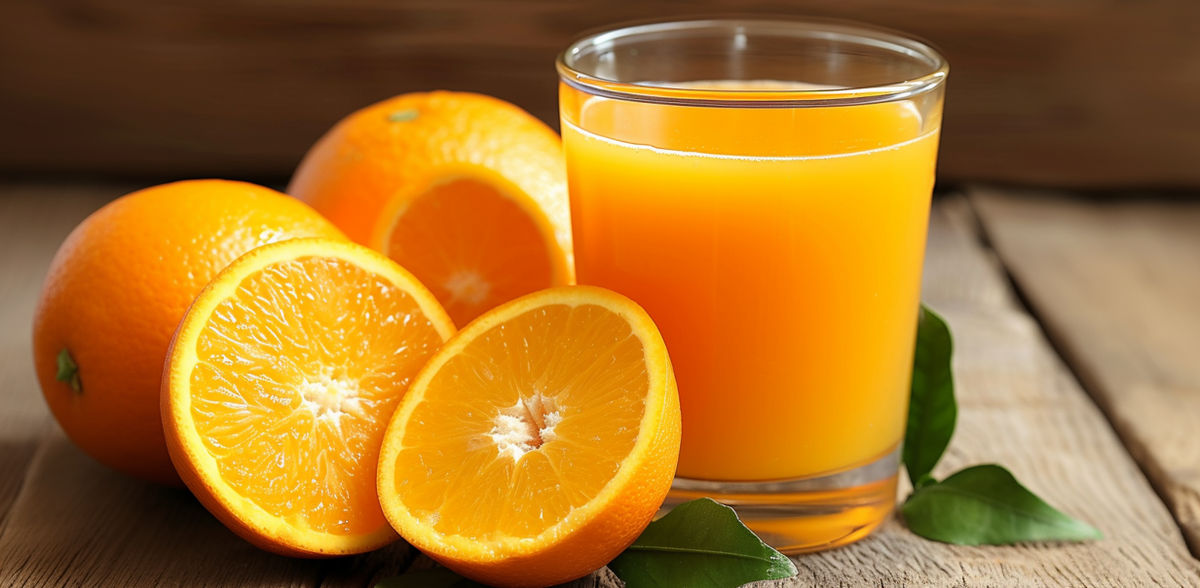Mystery of Novel Clove-Like Off-Flavor in Orange Juice Solved
Tracking down off-flavours using techniques such as gas chromatography-olfactometry and aroma extract dilution analysis
A research team led by the Leibniz Institute for Food Systems Biology at the Technical University of Munich has solved the mystery of a novel clove-like off-flavor in orange juice, the cause of which was previously unknown. The study proves for the first time that the undesirable flavor note is due to the odorant 5-vinylguaiacol. As the results of the study show, the substance is mainly produced during the Pasteurization process when residues of a cleaning agent react with a natural orange juice component under the influence of heat.
This is not the first time that the orange juice industry has had to contend with clove odor. So far, 4-vinylguaiacol has been considered the main cause of this undesirable flavor note, which is particularly abundant in orange juices that have been stored for a long time. The quantitative determination of this odorant has therefore long been an established part of routine quality controls.
Eva Bauersachs, PhD student at the Leibniz Institute in Freising and first author of the study, explains: "Recently, however, we have received reports of orange juice samples that had a pronounced clove odor despite a low concentration of 4-vinylguaiacol. We therefore asked ourselves which other odorants contribute to this undesirable off-flavor."
On the trail of off-flavors
To investigate this question, the research group led by Martin Steinhaus, head of the Food Metabolome Chemistry research group at the Leibniz Institute, carried out extensive investigations in cooperation with the Professorship of Functional Phytometabolomics and the Chair of Food Chemistry and Molecular Sensory Science at the Technical University of Munich. The aim was to identify the odorants that cause the previously unexplained off-flavor and to elucidate their origins.
Using techniques such as gas chromatography-olfactometry and aroma extract dilution analysis, the team identified the odorant 5-vinylguaiacol as the source of the off-flavor in an orange juice with a pronounced clove odor. The presence of this substance in orange juice was previously unknown. Compared to 4-vinylguaiacol, it even proved to be more odor-active in five out of six commercially available orange juices with a clove-like off-flavor.
Natural component + cleaning agent residue + heat = off-flavor
Further studies suggested that 5-vinylguaiacol is formed during pasteurization when the characteristic orange juice component hesperidin reacts with peracetic acid. Peracetic acid is used as a cleaning agent for cleaning-in-place (CIP) in the fruit juice industry, among others.
"Inadequate rinsing of the machines after the CIP process could therefore have led to contamination of the orange juice with peracetic acid and caused the formation of 5-vinylguaiacol during further processing," says principal investigator Martin Steinhaus. Based on the new scientific findings, the team recommends that orange juice processing companies should no longer use peracetic acid as a cleaning agent.
Original publication
Most read news
Other news from the department science

Get the food & beverage industry in your inbox
By submitting this form you agree that LUMITOS AG will send you the newsletter(s) selected above by email. Your data will not be passed on to third parties. Your data will be stored and processed in accordance with our data protection regulations. LUMITOS may contact you by email for the purpose of advertising or market and opinion surveys. You can revoke your consent at any time without giving reasons to LUMITOS AG, Ernst-Augustin-Str. 2, 12489 Berlin, Germany or by e-mail at revoke@lumitos.com with effect for the future. In addition, each email contains a link to unsubscribe from the corresponding newsletter.




























































